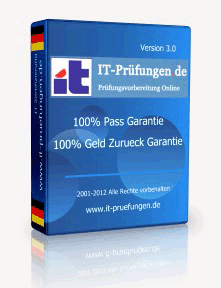70-595 IT-Beschaffung 10g DBA,it-pruefungen.de,11g,11i,9i DBA,9i Internet Application Developer, Applications,EBS,E Business Suite,Hyperion,Java and Middleware,Java-OCJ-BC, Java Technology, NetBeans IDE, OCA
,OCE,OCJ-A,OCJ-EA,OCJ-MA, OCJ-P,OCJ-WC,OCM,OCNA,OCP, OCSA
,OCSAs,OCSecA,OPN Certified Specialist,Oracle Applications
,Oracle Certification Program,Oracle Database,Oracle Middleware,Oracle Openoffice,Oracle SO,Oracle Solaris,Oracle Solaris Cluster,Other Oracle Certification,Server and Storage Systems, WebLogic 
70-595 IT-Beschaffung TS: Developing Business Process and Integration Solutions by Using Microsoft BizTalk Server 2010 Alle Lernmaterialien werden rechtzeitig nach der Änderung der Prüfung aktualisiert, damit Sie immer mit der neuesten Version auf Ihrere Prüfung vorbereiten können. Bevor Sie unsere Produkte einkaufen, können Sie auch kosteblos bei it-pruefungen.de .
Deutsche Zertifizierung 70-595 Microsoft
QUESTION 1
You are developing a BizTalk Server 2010 orchestration that consumes a web service located at http://localhost/ProcessData.asmx. The orchestration contains a non-transactional scope with an exception handler that handles any SOAP exceptions returned from the web service. The orchestration then completes successfully. After the orchestration completes with exceptions, you notice that the original messages posted to the web service are suspended in the BizTalk Administration console. You need to ensure that the messages are not suspended but are saved in an archive file on a shared server.
What should you do?
A. In the Administration console, modify the SOAP send port and enable routing for failed messages.
Create a FILE send port with filters ErrorReport.ErrorType==FailedMessage and ErrorReport.OutboundTransportLocation==http://localhost/ProcessData.asmx.
B. In Orchestration Designer, set Delivery Notification to Transmitted on the request/response port that sends the SOAP message. Create an exception handler with exception type DeliveryFailureException. In the handler, send a copy of the original message to a new send port that will transmit the message as a file.
C. In the Administration console, change the send pipeline to PassThruTransmit and enable Ordered delivery in the transport options.
D. In Orchestration Designer, modify the SOAP exception handler to send a copy of the original message to a new send port that will transmit the message as a file.
Answer: A
QUESTION 2
A BizTalk Server 2010 orchestration consumes a Microsoft Windows Communication Foundation (WCF) service. A request-response call to the WCF service is made inside a non-transactional scope. The scope has an exception handler that has its Exception Object Type property set to the type of the fault operation returned from the service. The handler receives the fault message. The WCF service throws a typed fault exception named WidgetException. You need to extract the exceptions detail node from thefault message. What should you do in the WCF send port configuration?
A. Set the Propagate Fault Message option to True. Specify the source of the outbound WCF message body by selecting Template. In the XML expression box, enter the XML of the WidgetException message.
B. Set the Propagate Fault Message option to True. Specify the source of the inbound BizTalk message body by selecting Path and entering the XPath expression for the WidgetException node.
C. Set the Propagate Fault Message option to True. Specify the source of the inbound WCF message body by selecting BizTalk Request Message Body.
D. Set the Propagate Fault Message option to True. Specify the source of the inbound BizTalk message body by selecting Envelope (soap:Envelope).
Answer: B
QUESTION 3
You are integrating BizTalk Server 2010 with a secure Microsoft Windows Communication Foundation (WCF) service that does not have metadata exchange (MEX) enabled. The web service provider distributes an XML schema with a root node named SecretData without a namespace for the data provided by the web service. You generate a BizTalk schema based on the XML schema. You finish developing the application and deploy it for integration testing. When testing the service, you trace the messages received from the service. You see that the response message is within a single element named SecureResponse. SOAP elements wrap the response message and the SecureResponse element. You need to specify the inbound message body properties to ensure that the message can be received. What should you do?
A. Choose the Envelope option. Add the soapProcessing endpoint behavior with the property processMessages=True.
B. Choose the Path option. For the body path expression, specify /*[local-name()='SecureResponse']/*[local-name()='SecretData'].
C. Choose the Path option. For the body path expression, specify /*[local-name()='SecretData']. Add the soapProcessing endpoint behavior with the property processMessages=True.
D. Choose the Body option. Add the useRequestHeadersForMetadataAddress service behavior.
Answer: B
Deutsche Zertifizierung 70-595 Microsoft
